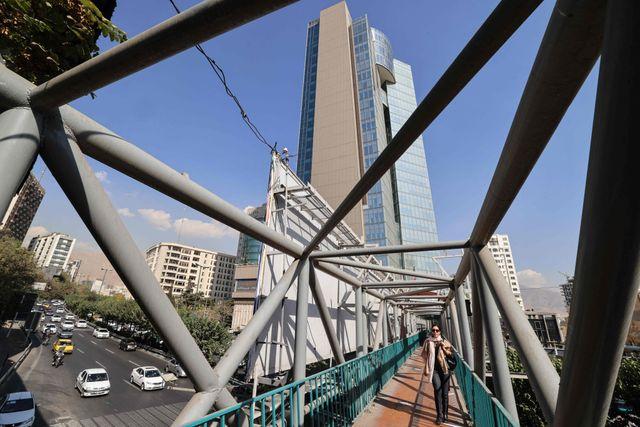In a significant move aimed at enhancing regional economic cooperation, Iran has proposed the establishment of a new currency to facilitate trade among its neighboring countries. The initiative, announced during recent discussions among regional leaders, seeks to bolster economic ties and reduce dependence on major world currencies, particularly the U.S. dollar. This proposal comes at a time of heightened economic pressure in Iran and growing interest in alternative currencies within the region. By fostering closer trade relationships, Iran hopes to navigate the complexities of international sanctions and stimulate economic growth. The implications of this initiative could reshape the financial landscape in the Middle East, prompting other nations to reconsider their trade practices and currency strategies. As discussions progress, the reception of this proposal among neighboring states will be closely scrutinized, with potential ramifications for regional stability and economic integration.
Iran’s Proposal for a Regional Currency Aims to Strengthen Trade Ties
The recent proposal by Iran to establish a regional currency reflects a strategic maneuver aimed at fostering stronger economic ties among neighboring countries. By implementing a shared currency system, Iran hopes to facilitate smoother trade transactions and minimize reliance on dominant global currencies, particularly the US dollar. This initiative is seen as a potential catalyst for increased investment, helping to stabilize economies within the region and enhance collaboration on various trade initiatives.
Key advantages of adopting a regional currency include:
- Reduction of transaction costs: A shared currency may eliminate the need for currency conversions, thus reducing fees and simplifying trade.
- Enhanced economic stability: A collective currency could help mitigate the impacts of volatile foreign exchange rates.
- Strengthened regional partnerships: This approach encourages cooperation among countries, fostering deeper economic relationships.
| Country | Potential Trade Benefits |
|---|---|
| Iran | Increased exports, reduced reliance on foreign currencies |
| Iraq | Improved trade flows, enhanced regional security |
| Turkey | Boosted economic cooperation, diversified trade |
Key Economic Implications and Regional Reactions to Iran’s Currency Initiative
Iran’s proposal for a regional currency aims to increase trade efficiency among neighboring countries, potentially altering the economic dynamics in the Middle East. By encouraging the use of a common currency, Tehran hopes to reduce dependence on the U.S. dollar, which has often been a source of tension and economic instability for many regional economies. This initiative could facilitate smoother transactions and lower transaction costs, promoting greater collaboration among nations with shared economic interests. The anticipated impacts include:
- Enhanced Trade Volume: Lower transaction costs may lead to an increase in trade between member nations.
- Currency Stability: Reducing exposure to fluctuations in foreign currency markets can help stabilize regional economies.
- Political Cooperation: A shared currency could foster closer political ties and diplomatic relations.
Regional reactions to this currency initiative have been mixed, reflecting the diverse geopolitical landscapes across neighboring countries. While some nations have expressed enthusiasm about the potential economic benefits, others remain cautious, wary of Iran’s influence and the complexities surrounding currency management. Key stakeholders are weighing the economic advantages against the potential challenges of establishing a consensus on currency value and exchange regulations. The following table summarizes the positions of several regional countries regarding the proposed initiative:
| Country | Position |
|---|---|
| Iran | Supportive |
| Turkey | Cautiously optimistic |
| Saudi Arabia | Wary |
| Iraq | Supportive |
| UAE | Neutral |
Strategic Recommendations for Implementation and Overcoming Challenges in Regional Trade
To effectively implement a regional currency aimed at boosting trade, it is crucial to establish a robust framework that addresses potential challenges. Key steps can include:
- Stakeholder Engagement: Actively involve governments, businesses, and regional organizations to foster a cooperative approach.
- Regulatory Harmonization: Ensure that financial regulations across participating nations align to facilitate smoother transactions.
- Infrastructure Development: Invest in necessary technological systems for currency exchange and trade facilitation.
Moreover, overcoming the inherent challenges of adopting a regional currency requires addressing economic disparities and build trust among member states. Effective strategies may involve:
- Transparent Communication: Regular dialogue to clarify objectives and manage expectations among stakeholders.
- Capacity Building: Training programs for local businesses to adapt to the new currency and maximize its benefits.
- Risk Mitigation Strategies: Developing financial mechanisms to protect against market volatility.
| Challenge | Recommendation |
|---|---|
| Economic Disparities | Implement equalization funds to support less affluent nations |
| Lack of Trust | Establish independent monitoring bodies for currency integrity |
| Technological Barriers | Facilitate partnerships with tech firms for digital solutions |
In Retrospect
In conclusion, Iran’s recent proposal for a regional currency underscores its commitment to enhancing trade relations within the region. By advocating for a shared currency, Tehran aims to reduce dependency on the US dollar and streamline economic interactions among neighboring countries. While the idea may face challenges, including political differences and varying economic conditions, it reflects a broader trend towards regional cooperation in an increasingly polarized global economy. As discussions progress, the potential impacts on trade dynamics and economic stability will be closely monitored by both regional players and international observers. The initiative could signify a pivotal shift in how countries in the Middle East approach commerce and collaboration in the coming years.
